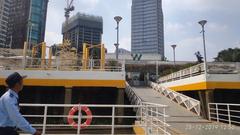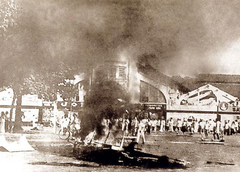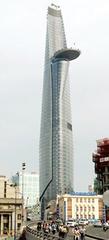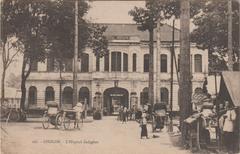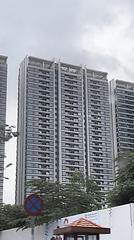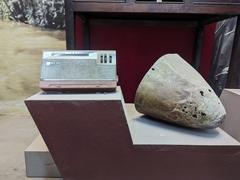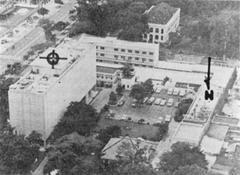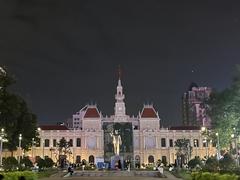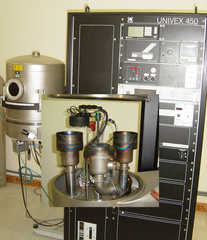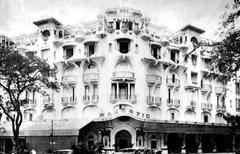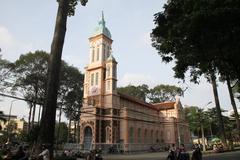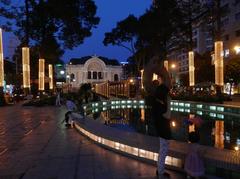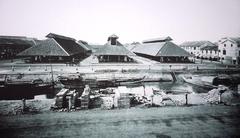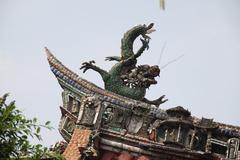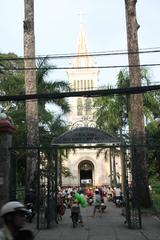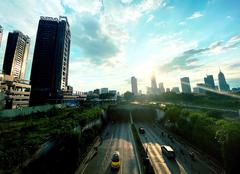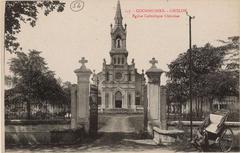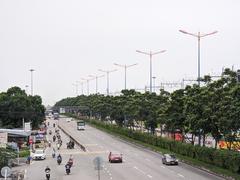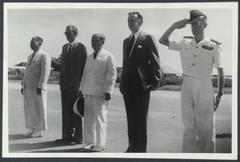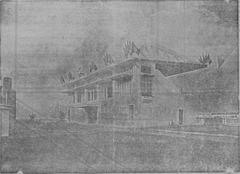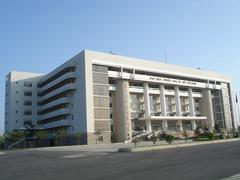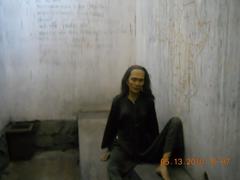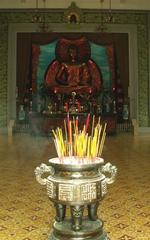Mariamman Temple Visiting Hours, Tickets, and Historical Significance in Ho Chi Minh City
Date: 04/07/2025
Introduction
Nestled in the vibrant heart of Ho Chi Minh City, the Mariamman Temple stands as a testament to the enduring cultural and spiritual heritage of the Tamil Hindu community in Vietnam. Established in 1880 by Tamil traders during the French colonial era, the temple offers a unique window into migration, religious devotion, and architectural artistry. Dedicated to Goddess Mariamman—revered for her powers over rain, fertility, and protection against disease—the temple fuses centuries-old South Indian traditions with the local Vietnamese context. Its Dravidian architectural style, featuring a colorful gopuram (entrance tower), richly adorned shrines, and vivid murals, makes it an architectural treasure and a rare example of Hindu temple design in Southeast Asia.
Beyond its visual appeal, Mariamman Temple serves as a dynamic community hub, fostering social outreach, religious syncretism, and cultural preservation for Indian expatriates and Vietnamese devotees alike. Visitors can experience daily rituals, festivals such as Diwali and Navaratri, and appreciate the temple’s role in promoting interfaith harmony. Its central location near landmarks like Ben Thanh Market and the Saigon Notre-Dame Basilica makes it a compelling stop for travelers seeking to understand Ho Chi Minh City’s multicultural tapestry (Inheritage Foundation; Vietnam Life; Local Vietnam).
Table of Contents
- Introduction
- Historical Background and Community Role
- Religious Significance
- Architecture
- Visitor Information
- Nearby Attractions
- Practical Visitor Tips
- Frequently Asked Questions (FAQs)
- Visuals and Media
- Conclusion and Call to Action
- References
Historical Background and Community Role
Origins and Historical Development
The Mariamman Temple was established in 1880 by Tamil traders, particularly the Chettiar community, who settled in what was then Saigon. This migration reflected broader patterns of Indian diaspora movement across colonial Southeast Asia, with the temple serving as both a spiritual anchor and a community gathering place (Inheritage Foundation).
Architectural Features and Symbolism
The temple’s South Indian Dravidian architecture is evident in its vibrant gopuram (gateway tower), adorned with intricate stucco figures of Hindu deities and mythological beings. Inside, the mandapam (hall) leads to the sanctum housing the main idol of Goddess Mariamman, flanked by guardians and subsidiary shrines to deities like Ganesha and Murugan. The rajagopuram and vimana showcase exceptional craftsmanship, with imported statues and materials lending further authenticity (Local Vietnam; BDATrip).
Community Integration and Social Role
While originally serving the Tamil Hindu diaspora, the temple now attracts devotees from Indian, Vietnamese, and Sino-Vietnamese backgrounds. Its open-door policy and free admission have promoted religious syncretism and cultural exchange. The temple committee also organizes charitable programs such as food distribution and cultural education, reinforcing its role as a center for both spiritual and social support (Vietnam Life).
Religious Significance
The Deity: Goddess Mariamman
Goddess Mariamman, venerated across South India as a protector against disease and a bringer of rain and prosperity, is the presiding deity. The main shrine follows traditional Shakta Agama iconography, with Mariamman seated and flanked by Lord Ganesha and Naaga, the serpent deity. Subsidiary shrines to Murugan and other gods enrich the spiritual landscape (Omeeyo).
Syncretism and Local Adaptation
Vietnamese worshippers often blend offerings and prayers at Mariamman Temple with Buddhist and Taoist practices, reflecting the city’s hallmark religious diversity (Vietnam Life).
Architecture
Key Features and Symbolism
- Raja Gopuram: The 12-meter gateway tower is adorned with brightly painted statues of Hindu deities and mythological figures, making it an unmistakable city landmark (Holidify; IDC Travel).
- Perimeter Statues: Statues of Nataraja, Lakshmi, Murugan, Kali, Brahma, and other deities encircle the temple, showcasing the expressive artistry of Tamil sculptors (Wikipedia).
- Mandapam and Sanctum: The high-ceilinged mandapam leads to the inner sanctum, where the principal idol of Mariamman is illuminated by oil lamps (BDATrip).
- Decorative Elements: Vivid murals, lotus motifs, and mandala-painted ceilings create a rich visual experience for visitors (Local Vietnam).
- Color Palette: The temple’s reds, oranges, yellows, blues, and greens symbolize energy, purity, and spiritual awakening (IDC Travel).
Preservation and Restoration
Continuous restoration efforts supported by the local Indian community ensure the temple remains vibrant and well-preserved, despite its age (BDATrip).
Visitor Information
Visiting Hours and Tickets
- Opening Hours: Daily, 7:00 AM – 7:00 PM (hours may vary during festivals and ceremonies).
- Admission: Free; donations are welcome.
(Deluxe Group Tours; Vietnam Life)
Accessibility
- Location: 45 Trương Định Street, Bến Thành Ward, District 1—central and easily accessible by taxi, ride-hailing apps, public transport, or on foot.
- Wheelchair Access: The entrance is street level, but interior steps limit full accessibility for wheelchairs.
- Facilities: The temple is small with limited tourist amenities and no on-site restrooms. Public facilities are available at nearby cafes or shopping centers.
Dress Code and Etiquette
- Wear modest clothing covering shoulders and knees.
- Remove shoes before entering the main prayer hall; racks are provided.
- Be silent and respectful during prayers and rituals.
- Photography is permitted in outer areas; always ask permission before photographing worshippers or inside the sanctum.
Photography Policy
Respectful photography is allowed in most areas, but avoid flash in the sanctum and always seek permission during rituals.
Nearby Attractions
- Ben Thanh Market: Iconic market for local goods and street food (Vietnam Is Awesome).
- Saigon Notre-Dame Cathedral Basilica: French-colonial cathedral with neo-Romanesque architecture (The Broke Backpacker).
- Central Post Office: Designed by Gustave Eiffel, a must-see for architecture lovers.
- Reunification Palace: Historic site central to Vietnam’s modern history.
- Jade Emperor Pagoda: Atmospheric spiritual site filled with incense and intricate statues.
- Fine Arts Museum: Colonial-era building showcasing Vietnamese art.
- Other Sites: Nguyen Hue Walking Street, Bitexco Financial Tower, and Pham Ngu Lao Street for nightlife and street food.
- Day Trips: Cu Chi Tunnels, Mekong Delta, Cao Dai Temple in Tay Ninh (Best Price Travel; Vietnam Is Awesome).
Practical Visitor Tips
- Hydration: Bring water—none is provided on site.
- Footwear: Wear shoes that are easy to remove.
- Crowds: Visit early morning or late afternoon for a quieter experience. Festivals are colorful but busy.
- Offerings: Fruit, flowers, or incense are customary and available from vendors outside.
- Language: English is limited; basic Vietnamese or gestures are sufficient for general communication.
- Safety: The area is safe, but watch personal belongings and be cautious crossing streets.
Frequently Asked Questions (FAQs)
Q: What are the Mariamman Temple visiting hours?
A: Daily, 7:00 AM – 7:00 PM, but hours may vary during festivals.
Q: Is there an entrance fee or tickets required?
A: No, admission is free; donations are welcome.
Q: Is the temple wheelchair accessible?
A: The entrance is street level, but interior steps limit full access.
Q: Can I take photos inside the temple?
A: Yes, in outer areas; seek permission before photographing worshippers or inside the sanctum.
Q: Are restrooms available?
A: No, but public restrooms are nearby in cafes and shopping centers.
Q: What is the best time to visit?
A: During Hindu festivals for vibrant celebrations, or on weekdays for a quieter visit.
Visuals and Media
For a richer experience, view images of the temple’s gopuram, interior shrines, and festival scenes. Use descriptive alt text such as “Mariamman Temple entrance tower in Ho Chi Minh City” and “Vibrant Hindu festival at Mariamman Temple.” Interactive maps and virtual tours are recommended for planning.
Conclusion and Call to Action
Mariamman Temple is more than a place of worship; it is a living symbol of cultural resilience, religious syncretism, and architectural brilliance in Ho Chi Minh City. With free admission, accessible hours, and proximity to major landmarks, it promises a unique spiritual and cultural experience. Time your visit during major festivals for lively celebrations, or enjoy the serene ambiance on quieter days. Respect local customs—dress modestly, remove shoes, and seek permission for photographs.
For an enhanced visit, download the Audiala app for guided tours and cultural insights, and explore nearby attractions to fully appreciate the city’s diverse heritage. Follow us on social media for the latest travel updates and inspiration.
References
- Mariamman Temple Ho Chi Minh City: Visitor Guide to History, Architecture & Practical Info (Inheritage Foundation)
- Mariamman Temple in Ho Chi Minh City: Cultural Significance and Visitor Information including Visiting Hours and Tickets (Deluxe Group Tours)
- Mariamman Temple Ho Chi Minh City: Architecture, Visiting Hours, Tickets & Travel Tips (BDATrip)
- Mariamman Temple Visiting Hours, Tickets, and Nearby Attractions in Ho Chi Minh City (The Broke Backpacker)
- Mariamman Hindu Temple in Ho Chi Minh City: A Local Guide to This Temple (Local Vietnam)
- Mariamman Hindu Temple Sightseeing (Omeeyo)
- Mariamman Temple Ho Chi Minh City (Vietnam Life)
